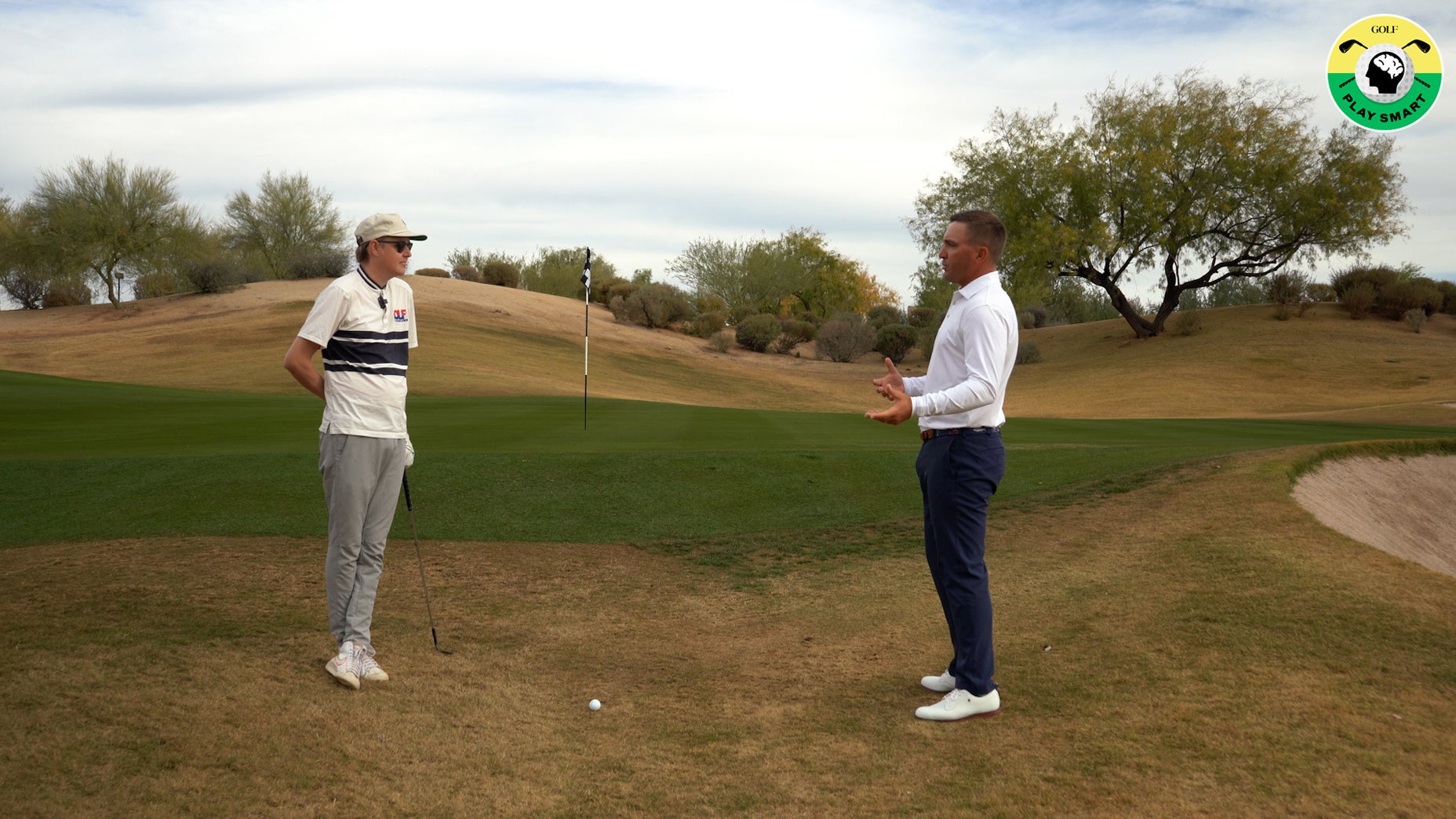Welcome to Play Smart, a regular GOLF.com game-improvement column that will help you play smarter, better golf.
If you want to shoot lower scores, it starts with limiting your mistakes. Sure, hitting good shots is a part of it, but many of the strokes you’ll save will be from playing smarter.
Bad shots are part of the game. Even the best players in the world hit them. The thing they do better than the average joe is missing in spots that they can recover from.
One of the things they try to avoid at all costs is a short-sided miss around the green. If you’ve ever watched golf on TV, you’ve likely heard the announcers talk about this position. But do you actually know what it means? In today’s edition of Play Smart, we’ve enlisted the help of GOLF Teacher to Watch Derek Swoboda for a full breakdown.
What does it mean to be short-sided?
When you’re attacking a green, take a look at where the pin is located. Most of the time, the flag won’t be directly in the middle of the green. Instead it will be cut closer to one edge than the other, bringing in sand, water or slopes on the surface into play.
“You look at the green,” Swoboda says. “And you have a vast majority of that green on the farther side.”
When you short-side yourself, it means that you’ve missed in a place where you’ve got little green to work with between the edge of the green and the hole. This leaves you with little runway to work with between your ball and the hole.
“You are very literally on the short side of the flag,” Swoboda says.
Why is being short-sided a bad thing?
When you short-side yourself, you’re not giving yourself much green to work with. This reduces your margin for error and forces you to need tons of spin to stop the ball near the hole.
“If you were on the opposite side of the green, you’d have a lot more green to work with,” Swoboda says. “So it makes those types of things more challenging for yourself.”
With less green to work with, it makes it harder to get the ball close to the hole. Instead of being able to hit a shot that stays on the ground — and is easier to control — you have to hit it up in the air and try to put spin on the ball.
It’s always important to note where the short-sided miss is when hitting your approach shot. Of course you don’t want to miss a shot, but if you do, you want to put yourself in the best position for your next shot. In order to do that, you need to avoid the short-sided miss.
“Short-siding yourself is the product of not [aiming away from trouble],” Swoboda says.
Aim away from trouble and avoid the short-sided miss and it’ll make getting up-and-down a heck of a lot easier. Do it consistently enough and it should drop your scores, too.
